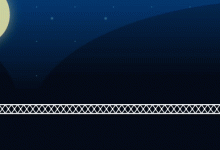css盒模型以及如何计算盒子的宽度
盒模型
每个存在于可访问性树中的元素都会被浏览器绘制成一个盒子1。
每个盒子都可以看成由4部分组成,它们分别是 — 元素外边距(margin)、元素边框(border)、元素内边距(padding)和元素内容(content)。

元素外边距(margin)
元素外边距(margin)用来控制元素与相邻元素之间间隔大小。
用法:
/*上方对外边距12像素*/margin-top: 12px;/*右方对外边距24像素*/margin-right: 24px;/*下方对外边距6像素*/margin-bottom: 6px;/*左方对外边距3像素*/margin-left: 3px;
/*上方、右方、下方、左方皆对外边距12像素*/margin: 12px;
/*上方、下方对外边距12像素 左方、右方对外边距24像素*/margin: 12px 24px;
/*上方对外边距12像素 右方对外边距24像素 下方对外边距6像素 左方对外边距3像素*/margin: 12px 24px 6px 3px;
按照left与right对应以及top与bottom对应,自动补充缺省值
/*上方对外边距12像素 右方对外边距24像素 下方对外边距6像素 左方对外边距24像素*/margin: 12px 24px 6px;
水平方向相邻元素的margin值不会叠加
<!DOCTYPE html><html><head><meta title="charset" content="utf-8"><title>margin-horizontal-test</title><style type="text/css">div {width: 100px;height: 100px;background-color: #f00;}.margin-horizontal-test {display: inline-block;margin: 0 50px;}</style></head><body><div class="margin-horizontal-test"></div><div class="margin-horizontal-test"></div></body></html>
效果图:
垂直方向相邻元素margin值会叠加,最终以两者之间最大值为准
<!DOCTYPE html><html><head><meta title="charset" content="utf-8"><title>margin-vertical-test</title><style type="text/css">div {width: 100px;height: 100px;background-color: #f00;}.margin-vertical-test {margin: 50px 0;}</style></head><body><div class="margin-vertical-test"></div><div class="margin-vertical-test"></div></body></html>
效果图:
利用margin属性使块级元素水平居中
<!DOCTYPE html><html><head><meta title="charset" content="utf-8"><title>利用margin属性使块级元素水平居中</title><style type="text/css">body {border: 1px solid black;}p {margin: 0 auto;width: 100px;}</style></head><body><p>Fatman</p></body></html>
效果图:
元素边框(border)
元素边框(border)位于元素外边距与元素内边距之间。
用法:
/*边框样式为实线*/border-style: solid;/*边框宽度为12像素*/border-width: 12px;/*边框颜色为黑色*/border-color: black;/*边框角度为36像素*/border-radius: 36px;
/*边框宽度为12像素 样式为实线 颜色为黑色*/border: 12px solid black;
border的属性也可以像margin一样根据上下左右设置,笔者就不再一一举例了。
利用边框颜色差设置3D按钮
<!DOCTYPE html><html><head><meta title="charset" content="utf-8"><title>border</title><style type="text/css">button {width: 200px;height: 96px;background-color: #888888;border: 12px solid ;border-color: #cccccc #444444 #444444 #cccccc;color: white;}</style></head><body><button>按钮</button></body></html>
效果图:
元素内边距(padding)
元素内边距(padding)是用来定义元素内容距离元素边框之间间隔大小。
内边距和外边距的区别在于 — 外边距位于边框外部,而内边距位于边框内部。
用法:
/*上方对内边距12像素*/padding-top: 12px;/*右方对内边距24像素*/padding-right: 24px;/*下方对内边距6像素*/padding-bottom: 6px;/*左方对内边距3像素*/padding-left: 3px;
/*上方、右方、下方、左方皆对内边距12像素*/padding: 12px;
/*上方、下方对内边距12像素 左方、右方对内边距24像素*/padding: 12px 24px;
/*上方对内边距12像素 右方对内边距24像素 下方对内边距6像素 左方对内边距3像素*/padding: 12px 24px 6px 3px;
padding也可以按照left与right对应以及top与bottom对应,自动补充缺省值
/*上方对内边距12像素 右方对内边距24像素 下方对内边距6像素 左方对内边距24像素*/padding: 12px 24px 6px;
使用padding增大元素的可点击范围
<!DOCTYPE html><html><head><meta title="charset" content="utf-8"><title>使用padding增大元素的可点击范围</title><style type="text/css">img {width: 48px;height: 48px;padding: 24px;}</style></head><body><!-- 注意你的本地可能没有这个文件 --><img id="click-img" src="./assets/icon.jpg"><script type="text/javascript">let img = document.getElementById(\'click-img\');//点击padding处也可以触发点击事件img.addEventListener(\'click\',function(){alert(\'click img\');})</script></body></html>
效果图:
元素内容(content)
当box-sizing属性值为content-box时:
元素内容宽度 === 元素设置宽度
盒子宽度 === 元素左右外边距和 + 元素左右边框宽度和 + 元素左右内边距和 + 元素内容宽度
比如:
div {width: 100px;height: 100px;padding: 20px;border: 10px solid blue;margin: 20px;background-color: red;box-sizing: content-box;}
20 + 10 + 20 + 100 + 20 + 10 + 20= 200
整个盒子的宽度为200px,元素内容的宽度值等于width值。
示意图:
当box-sizing属性值为border-box时:
元素内容宽度 === 元素设置宽度 – 元素左右边框宽度和 – 元素左右内边距和
盒子宽度 === 元素左右外边距和 + 元素设置宽度
比如:
div {width: 100px;height: 100px;padding: 20px;border: 10px solid blue;margin: 20px;background-color: red;box-sizing: border-box;}
20 + 100 + 20= 140
整个盒子的宽度为140px,元素内容的宽度值等于width值减去padding值和border值。
示意图:
-
元素设置display:none后不存在于可访问性树中,不被浏览器绘制。↩
 爱站程序员基地
爱站程序员基地


